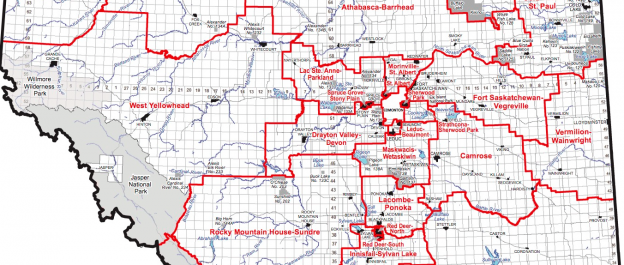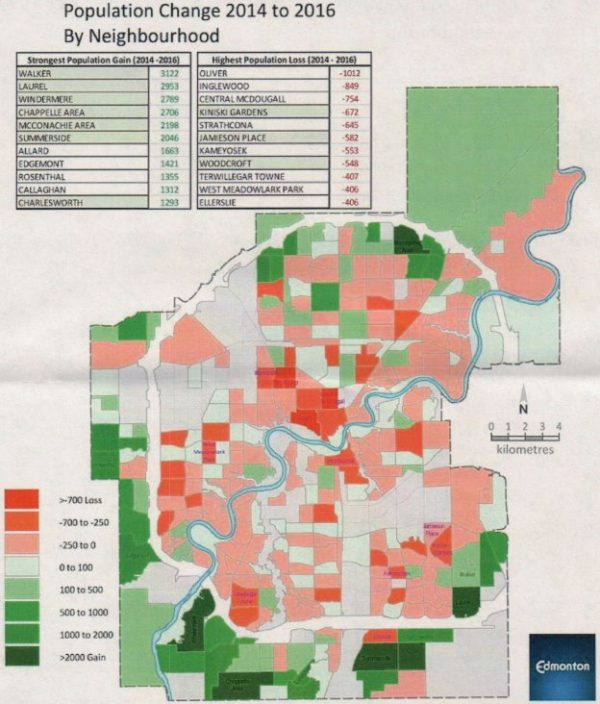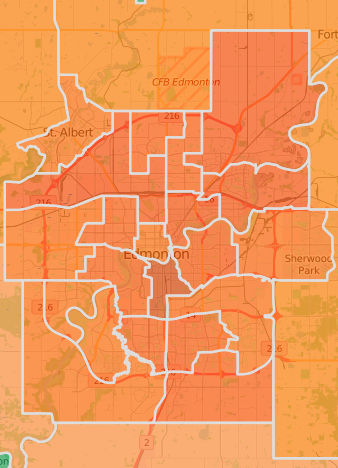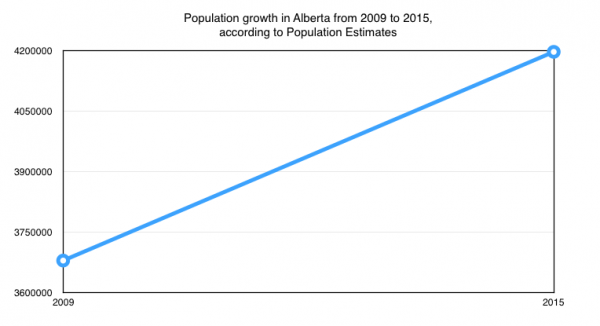Alberta’s population has grown by 517,365 since the last time our provincial electoral boundaries were redrawn to reflect population growth. According to population estimates released on the provincial government’s Open Data portal this week, Alberta’s population reached 4,196,457 in 2015, up from population estimates of 3,679,092 in 2009, the last time boundaries were redistributed.
Over this six year period, Alberta’s two largest cities saw a huge population spike, with Edmonton growing from a population of 817,867 in 2009 to 950,421 in 2015 and Calgary from 1,107,192 to 1,293,023. Sixty-one percent of the province’s population growth is estimated to have moved to Calgary and Edmonton during this time.
According to these estimates, the combined population of Calgary and Edmonton represents 53 percent of Alberta’s population.
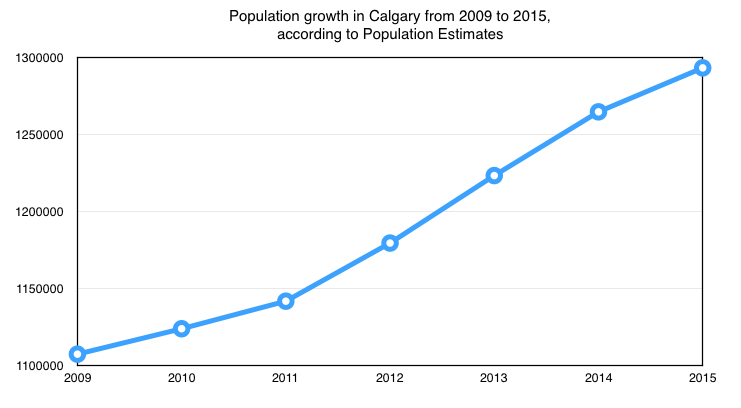
While most of the province’s growth is estimated to have been in the two big cities, Alberta’s medium-sized municipalities have also grown. According to the population estimates, Strathcona County grew from 92,299 in 2009 to 107,104 in 2015, Airdrie grew from 38,704 in 2009 to 50,257 in 2015, St. Albert grew from 62,563 in 2009 to 71,096 in 2015, and Wood Buffalo grew from 63,376 in 2009 to 77,804 in 2015.
Some smaller rural communities, like Hanna, Oyen, Starland County, Stettler County, Swan Hills, and the town and county of Provost, actually saw a decline in the population since the electoral boundaries were last redrawn, according to the estimates.

In order to reflect this significant population shift, the Government of Alberta should take action to ensure the electoral boundaries are redrawn before the next provincial election, which is scheduled to be held between March 1 and May 31, 2019. Redrawing the province’s electoral boundaries to reflect population growth will ensure that Albertans receive more effective representation in the Legislative Assembly after the next election.
The 2009/2010 Electoral Boundary Commission estimated that the average population of Alberta’s 87 electoral districts was 40,880. Using the same formula, the average population according to 2015 population estimates would be 48,235, which is very close to 51,100 maximum allowable population in each electoral district (25 percent above the 2009 average).
As I wrote in Sept. 2015, Section 5 of the Electoral Boundaries Commission Act states that a commission be appointed following every second election and a minimum of eight years and maximum of ten years since the previous commission. Two elections have been held since the last commission was appointed only seven years ago. This timeline was skewed when Progressive Conservative leader Jim Prentice called an election one year earlier than was set in Alberta’s fixed election date law.
According to a statement made by Chief Electoral Officer Glen Resler on Sept. 24, 2015, the currently existing legal timeline would not give the commission and Elections Alberta staff enough time to prepare for the 2019 election. Mr. Resler told an MLA committee that he would recommend the government introduce an amendment to the Act to shorten the timeline so a commission can be appointed before the eight year minimum period.
The government should amend the timeline to ensure the electoral boundaries are redrawn before the next provincial election. The government should also make changes other sections of the Electoral Boundaries Commission Act that would create a more fair process of drawing electoral districts and remove partisan appointments to the commission (I wrote about some of the changes that should be made in an earlier post).
The final report from the 2009/2010 Electoral Boundaries Commission included a handful of recommendations for future commissions:
- The Legislative Assembly needs to seriously consider how urban and rural perspectives will be addressed in the future.
- The Legislative Assembly should consider reassessing the resources allocated for constituency offices.
- Future commissions should be appointed early in the calendar year.
- The Legislative Assembly may wish to consider adopting a protocol for the naming of electoral divisions for the guidance of future commissions.
